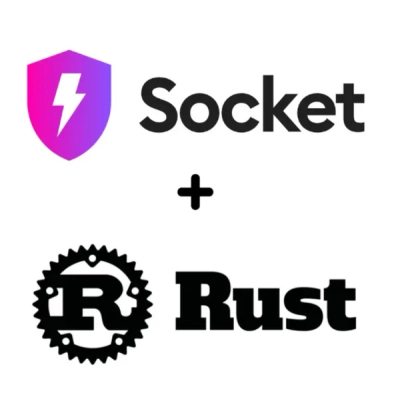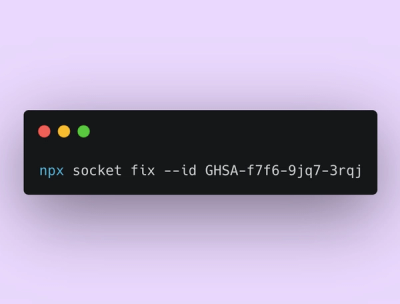
Product
Rust Support Now in Beta
Socket's Rust support is moving to Beta: all users can scan Cargo projects and generate SBOMs, including Cargo.toml-only crates, with Rust-aware supply chain checks.
googlemaps-datalayer-clusterer
Advanced tools
Clusterer library for Google Maps JavaScript API data layer
This is fast data layer features clustering library. It's working on top of the Data Layer of Google Maps JavaScript API v3 and maintain the same public methods as a standard Data layer.
The Data Layer Clusterer library can be served from the firebase host. Add the following script tag in your html file
<script src="https://maps-tools-242a6.firebaseapp.com/clusterer/datalayer/datalayerclusterer.js">
</script>
Please note that Data Layer Clusterer implements a google.maps.OverlayView interface, so it must be initialized after the Google Maps JavaScript API v3 is fully loaded.
Typically Google Maps JavaScript API is loaded in asynchronous way as specified in the official documentation
<script async defer
src="https://maps.googleapis.com/maps/api/js?key=[YOUR_API_KEY]]&callback=initMap">
</script>
That means we must include clusterer initialization code inside initMap() callback function after map object initialization.
E.g.
function initMap() {
var map = new google.maps.Map(document.getElementById('map'), {
zoom: 12,
center: {lat: 41.3850639, lng: 2.1734035}
});
DataLayerClusterer.getClusterer().then(Clusterer => {
if (Clusterer) {
const clusterer = new Clusterer.Builder(map)
.withMaxZoom(20)
.build();
clusterer.loadGeoJson("https://maps-tools-242a6.firebaseapp.com/clusterer/demos/samplegeojson.json");
}
});
}
Note that clusterer is loaded asynchronously, so the logic should be implemented once MarkerClusterer.getClusterer() promise is resolved.
In order to set up a clusterer you should call DataLayerClusterer.getClusterer() method that returns a promise. Once resolved the promise you will have a Clusterer class that should be used to create an instance of clusterer object.
Code snippet is the following
DataLayerClusterer.getClusterer().then(Clusterer => {
if (Clusterer) {
// TODO: create instance of clusterer
}
});
In order to create instance of clusterer you must call Builder, the Builder accepts an instance of google.maps.Map as a constructor parameter and allows call several chained functions to establish parameters of clusterer.
const clusterer = new Clusterer.Builder(map)
.withMaxZoom(20)
.build();
withGridSize(gridSize: number)
withMinClusterSize(minClusterSize: number)
withMaxZoom(maxZoom: number)
withClassName(className: string)
withStyles(styles: IStyle[])
withImagePath(imagePath: string)
withImageExtension(imageExtension: string)
withZoomOnClick(zoomOnClick: boolean)
withAverageCenter(averageCenter: boolean)
This interface is used to style the cluster's icons. There is default implementation of styles, but you can override it applying array of styles in Builder object
interface IStyle {
url: string;
height: number;
width: number;
textColor?: string;
anchor?: number[] | null;
textSize?: number;
backgroundPosition?: string;
}
In order to add features to the clusterer you should use addGeoJson() or loadGeoJson() methods. These methods accept the same parameters as corresponding methods of the data layer in Google Maps JavaScript API v3.
const features = clusterer.addGeoJson(jsonObject);
clusterer.loadGeoJson(urlJSON, (features) => {
// Do something with loaded features here
});
setVisible(v: boolean): void;
getTotalClusters(): number;
getClustererBounds(): google.maps.LatLngBounds;
getFeaturesBounds(): google.maps.LatLngBounds;
getExtendedBounds(bounds: google.maps.LatLngBounds): google.maps.LatLngBounds;
getFeatureDimensions(feature: google.maps.Data.Feature): IDimension
addFeatureOrAlternativeToDataLayer(feature: google.maps.Data.Feature): void;
removeFeatureAndAlternativeFromDataLayer(feature: google.maps.Data.Feature): void;
redraw(): void;
destroy(): void;
add(feature: google.maps.Data.Feature | google.maps.Data.FeatureOptions): google.maps.Data.Feature;
addGeoJson(geoJson: object, options?: google.maps.Data.GeoJsonOptions): google.maps.Data.Feature[];
contains(feature: google.maps.Data.Feature): boolean;
forEach(callback: (feature: google.maps.Data.Feature) => void): void;
getControlPosition(): google.maps.ControlPosition;
getControls(): google.maps.DrawingMode[];
getDrawingMode(): google.maps.DrawingMode | null;
getFeatureById(id: string | number): google.maps.Data.Feature | null;
getStyle(): google.maps.Data.StylingFunction | google.maps.Data.StyleOptions;
loadGeoJson(url: string, options?: google.maps.Data.GeoJsonOptions, callback?: (features: google.maps.Data.Feature[]) => void): void;
overrideStyle(feature: google.maps.Data.Feature, style: google.maps.Data.StyleOptions): void;
remove(feature: google.maps.Data.Feature): void;
revertStyle(feature?: google.maps.Data.Feature | undefined): void;
setControlPosition(controlPosition: google.maps.ControlPosition): void;
setControls(controls: google.maps.DrawingMode[] | null): void;
setDrawingMode(drawingMode: google.maps.DrawingMode | null): void;
setStyle(style: google.maps.Data.StylingFunction | google.maps.Data.StyleOptions): void;
toGeoJson(callback: (json: object) => void): void;
The live demo is available at https://maps-tools-242a6.firebaseapp.com/clusterer/demos/datalayerclusterer.html
The source code of this library is licensed under the MIT License.
FAQs
Clusterer library for Google Maps JavaScript API data layer
We found that googlemaps-datalayer-clusterer demonstrated a not healthy version release cadence and project activity because the last version was released a year ago. It has 1 open source maintainer collaborating on the project.
Did you know?

Socket for GitHub automatically highlights issues in each pull request and monitors the health of all your open source dependencies. Discover the contents of your packages and block harmful activity before you install or update your dependencies.

Product
Socket's Rust support is moving to Beta: all users can scan Cargo projects and generate SBOMs, including Cargo.toml-only crates, with Rust-aware supply chain checks.

Product
Socket Fix 2.0 brings targeted CVE remediation, smarter upgrade planning, and broader ecosystem support to help developers get to zero alerts.

Security News
Socket CEO Feross Aboukhadijeh joins Risky Business Weekly to unpack recent npm phishing attacks, their limited impact, and the risks if attackers get smarter.